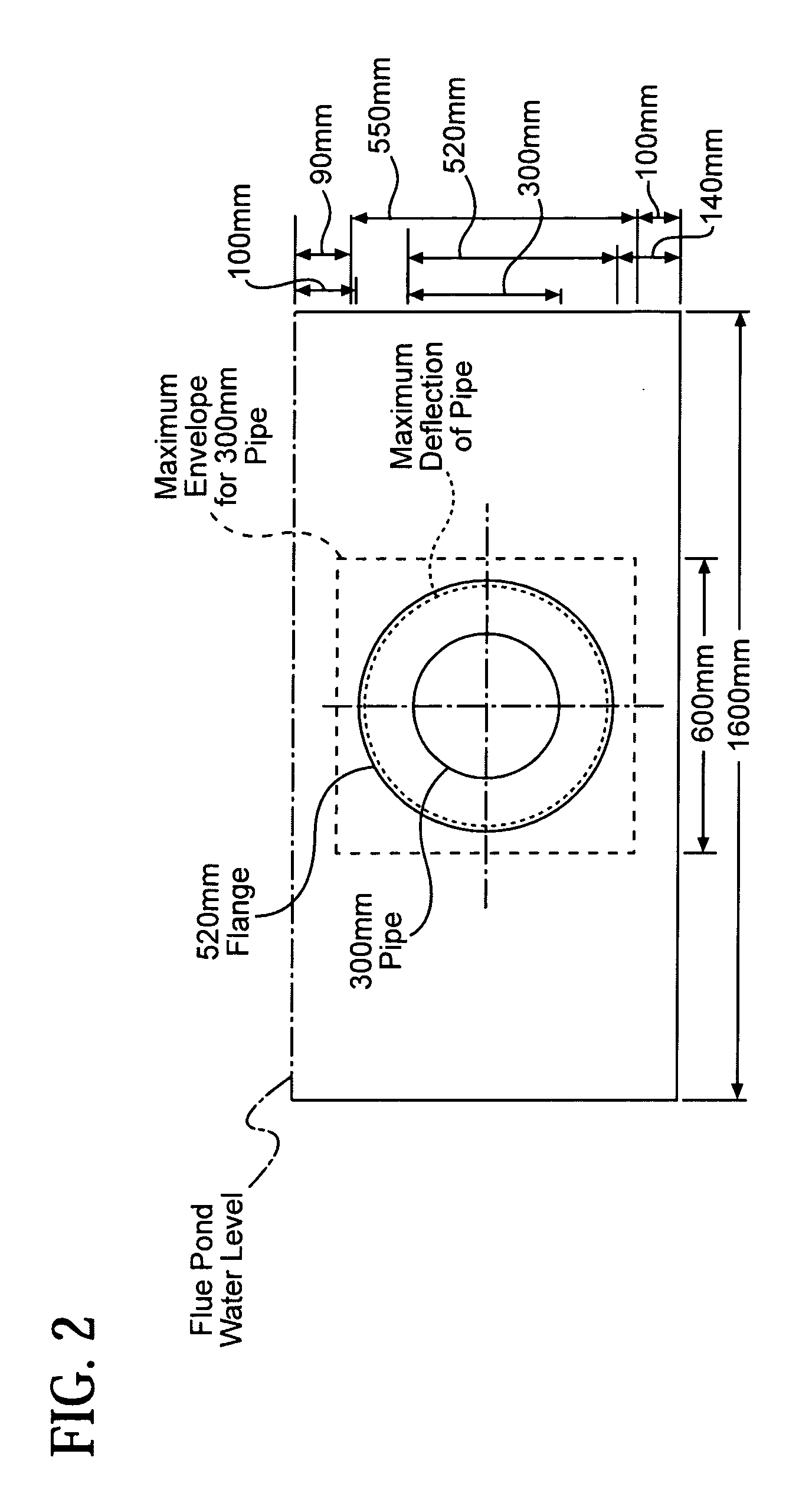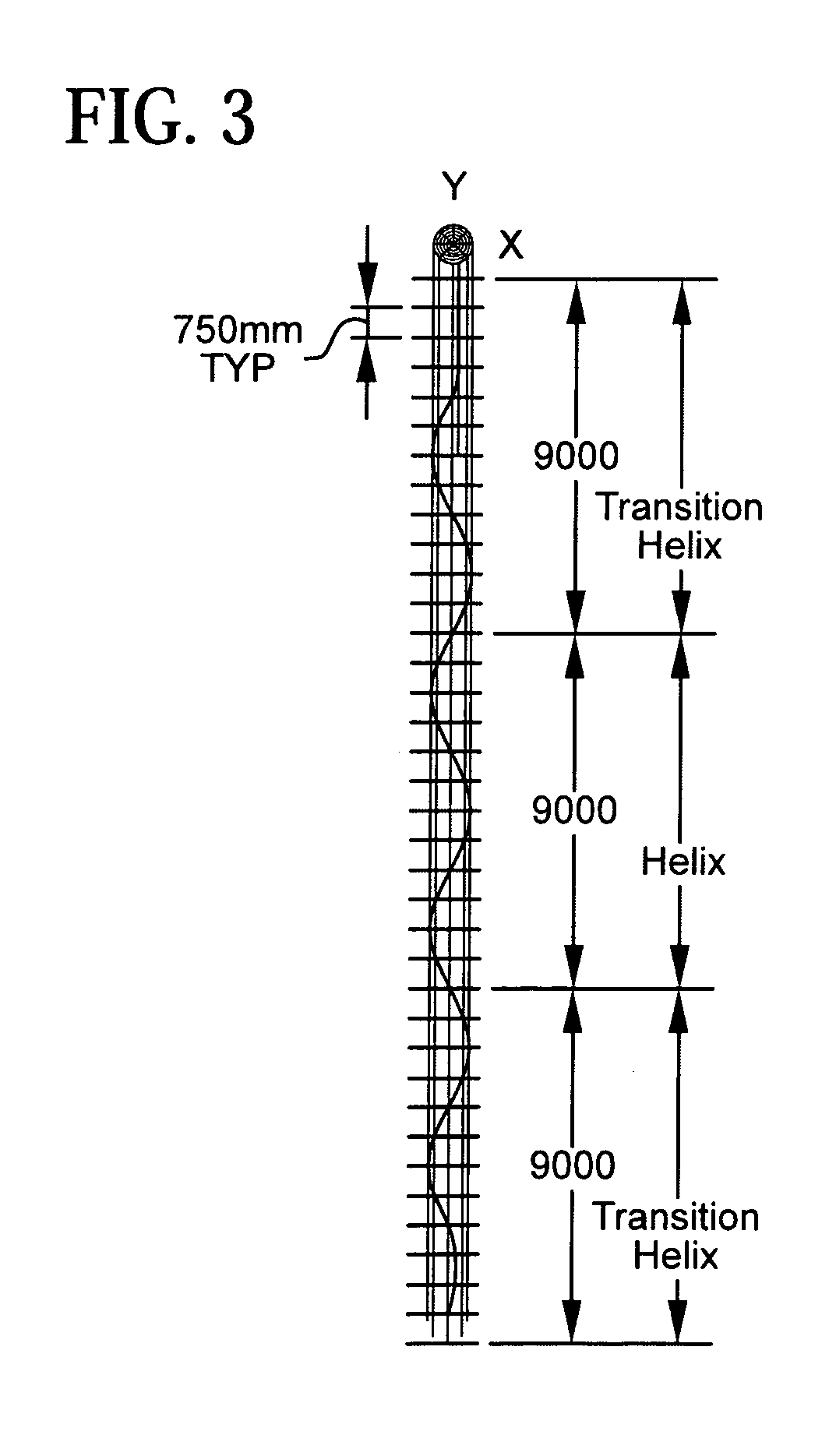Process and device for cooling inorganic pigments
a technology of inorganic pigments and cooling devices, which is applied in the direction of titanium compounds, indirect heat exchangers, lighting and heating apparatus, etc., can solve the problems of affecting heat exchange, affecting the efficiency of heat exchange in the conduit, and only partially removing deposits from the inside surface of the scouring media
- Summary
- Abstract
- Description
- Claims
- Application Information
AI Technical Summary
Benefits of technology
Problems solved by technology
Method used
Image
Examples
example 1
Trial With a Helical Conduit Having a Three Degree Helix Angle
[0073] A helical conduit made from a 27.5 meter-long flue pipe with a 300 mm diameter, having a constant helix angle of 3 degrees, with three helical bends that were each complete 360 degree spiral turns was installed in a heat exchanger in a flue pond. The heat exchanger was connected directly to the outlet of an oxidation reactor. The heat exchanger was made up of several loops of pipes immersed in cooled water and the helical conduit was installed at the first length of the second loop. The helical conduit removed an additional 83 kJ / s of heat as compared with a straight conduit of the same nominal length in the same position, rendering the helical conduit about 21.6% more efficient than the straight conduit. “Straight” or “nominal” length refers to the length of a helix or helical pipe. If uncoiled, the pipe would be longer by about 0.25 m per helix. The furthest deviation of the helix was 100 mm from the center of t...
example 2
Scrub Salt Usage
[0077] Average data for scrub salt usage during runs with and without a helical pipe are displayed in Table II.
TABLE IIAverage Scrub Salt UsageRunRate (tph)NaCl (%)GradeHelical or Straight111.42.29Neutral toneStraight pipe210.473.48Blue toneHelical pipe311.302.32Neutral toneHelical pipe411.002.13Neutral toneHelical pipe510.402.59Blue toneHelical pipe611.331.91Neutral toneHelical Pipe79.241.29Neutral toneHelical Pipe89.391.93Blue toneHelical Pipe910.241.73Neutral toneHelical Pipe1010.272.31Blue toneHelical Pipe119.882.57Blue toneStraight Pipe1211.272.22Neutral toneStraight pipe
Run number describes runs for this specific study described in this table.
[0078] Srub salt usage was about 0.3 to 0.5% lower for the neutral tone run. Variation of NaCI scrub salt and rate on a daily basis was measured for nine months with the helical conduit in place, and averaged about 15% less than when using a heat exchanger having no helical conduit when normalized to reactor rate.
[007...
example 3
Scouring, Wear, and Flow Resistance Using Helical Pipe
[0080] The helical pipe was removed between Runs 3 and 4 in Table II, and a video was taken on the interior wall of the helical pipe. The video traversed the whole length. It showed that the scrub salt scoured mainly the bottom quarter to fifth of the wall forming a faintly distinct path. The path of the scouring did follow the helical profile and became slightly more prominent at the most outward points / bends. This indicated the helical pipe should have more area for heat transfer and so should be more efficient to remove heat from the flow stream.
[0081] Thickness measurements were made on several selected locations (perceived to have high wear) when the helical pipe was first taken out. No decrease in thickness or wear occurred. The same measurement was taken when the helical pipe was removed from the flue pond following 10 months of continuous service. The wear was negligible.
[0082] From the flue pipe differential pressure ...
PUM
| Property | Measurement | Unit |
|---|---|---|
| helix angle | aaaaa | aaaaa |
| helix angle | aaaaa | aaaaa |
| helix angle | aaaaa | aaaaa |
Abstract
Description
Claims
Application Information
 Login to View More
Login to View More - R&D
- Intellectual Property
- Life Sciences
- Materials
- Tech Scout
- Unparalleled Data Quality
- Higher Quality Content
- 60% Fewer Hallucinations
Browse by: Latest US Patents, China's latest patents, Technical Efficacy Thesaurus, Application Domain, Technology Topic, Popular Technical Reports.
© 2025 PatSnap. All rights reserved.Legal|Privacy policy|Modern Slavery Act Transparency Statement|Sitemap|About US| Contact US: help@patsnap.com



